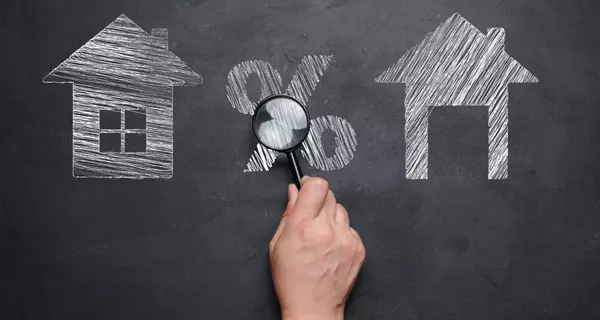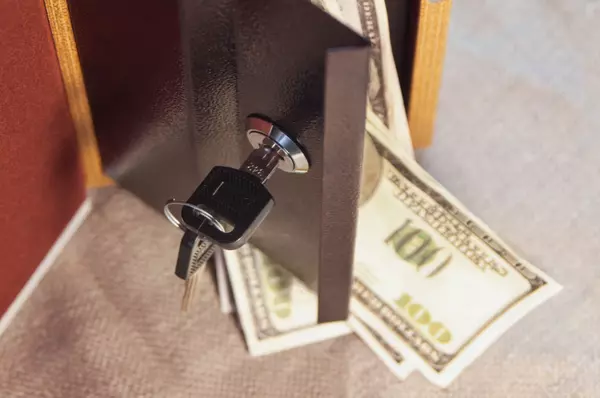

Maximize Your Retirement Funds: Effective Ways to Cut Housing Costs
Introduction Picture this: You're sitting on your cozy porch, a steaming cup of coffee in hand, as the sun peeks over the horizon. The calm morning is a testament to the wise financial choices you made, ensuring your retirement savings last. Yet, for many, this idyllic scene is overshadowed by the nagging concern of hefty housing costs. Retirement should be your golden years, a time to bask in the rewards of your hard work. But those high housing expenses can make it tough to feel truly secure. What if you could slash these costs and make your retirement funds stretch further? Guess what—you can! There are several savvy strategies to help you trim those housing expenses, giving you the freedom to enjoy your retirement worry-free. In this article, we’ll walk you through practical and doable tips to manage and reduce your housing costs. Whether it's downsizing, finding more affordable living options, tapping into your home equity, or boosting your home's energy efficiency, we’ve got you covered. Let's jump in and uncover how to craft a more affordable, stress-free retirement. Downsizing Your Home: Benefits and Tips Ever thought about moving to a smaller place to save big? Downsizing is one of the smartest moves to cut housing costs during retirement. This means shifting to a cozier, easier-to-handle, and often cheaper home. Downsizing not only slashes your mortgage or rent but can also trim your utility bills, maintenance expenses, and property taxes. Benefits of Downsizing Lower Monthly Expenses: A smaller home usually means a lighter mortgage or rent bill. This frees up cash for travel, hobbies, or healthcare—whatever makes your retirement shine. Reduced Maintenance and Utility Costs: Big homes often come with big upkeep and utility bills. Downsizing to a smaller space can chop these costs down, letting you use your money more wisely. Simplified Lifestyle: Less space means less clutter. Fewer rooms mean fewer chores, giving you more time to enjoy the fun parts of retirement. Potential Profit from Selling: If you own your home, selling it and moving to a cheaper place could give you a nice profit. Use this extra cash to boost your retirement savings or clear any debts. Tips for Downsizing Assess Your Needs: Before you start, think about how much space you really need. What amenities are must-haves? This helps you make a smart move. Declutter Your Belongings: Moving to a smaller home means you’ll need to cut down on your stuff. Start by decluttering. Donate, sell, or give away things you no longer need. It’s a great chance to lighten your load. Research Housing Options: Check out different housing options within your budget. Think about smaller single-family homes, condos, townhouses, or active adult communities with amenities for retirees. Consider Location: Location matters. Think about being close to family, healthcare, public transport, and fun activities. Moving to a cheaper area can further cut your living costs. Plan the Move: Downsizing is a big change, so plan it well. Set a timeline, budget for moving costs, and consider hiring movers. These steps can make your move smoother and less stressful. By downsizing, you can slash housing costs and enjoy a simpler, more affordable retirement. Next up, let’s dive into some affordable living options to further stretch your retirement funds. Exploring Affordable Living Options Finding affordable places to live is another smart move to lower housing costs in retirement. You don't always have to stick with traditional housing. There are plenty of alternatives that save money while still offering a comfy and enjoyable lifestyle. Affordable Living Options Active Adult Communities: These places are made just for retirees and often come with cool amenities like fitness centers, social clubs, and organized activities. They usually cost less than regular homes and provide a fun, supportive environment. Co-Housing: In co-housing, you have your private space but share common areas like kitchens, gardens, and recreation spots with other residents. This setup can lower living costs and foster a tight-knit community. Manufactured Homes: Modern mobile homes are much better in quality and design than they used to be. They offer an affordable housing choice, and you can either own the land or rent a lot in a mobile home park. Renting: Renting can be cheaper than owning, especially if you want to dodge maintenance costs and responsibilities. It also gives you flexibility if you plan to travel or move around during retirement. House Sharing: Sharing a home with another retiree or family member can cut housing costs significantly. Plus, it provides companionship and a sense of security, which many retirees find appealing. Tips for Exploring Affordable Living Options Evaluate Your Priorities: Figure out what matters most to you in a home. Do you care more about location, amenities, community vibe, or keeping costs low? Knowing your priorities helps you choose wisely. Research Thoroughly: Spend time looking into different options. Visit communities, chat with current residents, and compare costs and benefits. Check out online reviews and forums for extra insights. Consider Long-Term Needs: Think about how your needs might change over time. Pick a living option that can handle future health or mobility issues. Budget Carefully: Make a detailed budget that covers all potential costs like monthly fees, maintenance, utilities, and transportation. This gives you a clear picture of what you can really afford. Seek Professional Advice: Talk to a financial advisor or housing expert who knows about retirement living. They can give you tailored advice and help you figure out the best options. By exploring these affordable living options, you can cut down your housing costs and stretch your retirement funds, making life more comfortable. Up next, we'll compare renting and owning during retirement to help you decide which is more budget-friendly for you. Renting vs. Owning: Which is More Cost-Effective in Retirement? Choosing between renting or owning a home during retirement is a significant decision that can greatly affect your finances. Each option comes with its own set of advantages and drawbacks, and the right choice depends on your personal situation, preferences, and financial health. Pros and Cons of Renting Pros: Flexibility: Renting allows you to move easily if your needs or preferences change, which is great if you plan to travel or relocate near family. Lower Upfront Costs: Renting usually requires less money upfront compared to buying. This means no hefty down payments or closing costs, helping you keep your savings more liquid. No Maintenance Responsibilities: When you rent, the landlord handles maintenance and repairs, saving you time, effort, and unexpected expenses. Predictable Expenses: Renting involves predictable monthly expenses, making it easier to manage your retirement budget. Cons: Lack of Equity: Renting doesn't build equity. You won't have a property that appreciates in value or can be used for financial leverage. Rent Increases: Rent can go up over time, which might affect your long-term budget. Limited Control: Renters have limited control over property changes and must adhere to the landlord's rules. Pros and Cons of Owning Pros: Building Equity: Homeownership builds equity over time, offering financial security and potential appreciation. Stability: Owning a home gives you stability and the freedom to make changes to your property. Potential Tax Benefits: Homeowners may get tax deductions on mortgage interest and property taxes, reducing overall tax liability. Fixed Housing Costs: A fixed-rate mortgage means stable monthly payments, providing budget predictability. Cons: Maintenance and Repairs: Homeowners are responsible for maintenance and repairs, which can be costly and unpredictable. Higher Upfront Costs: Buying a home involves significant upfront expenses, including down payment and closing costs, which can deplete your savings. Market Risk: Home values can fluctuate, posing a risk of depreciation. Less Flexibility: Owning a home can make it harder to move or downsize quickly due to the lengthy process of selling property. Making the Decision Financial Situation: Evaluate your financial health, including savings, income, and expenses. Ensure you can afford the choice without compromising your retirement lifestyle. Lifestyle Preferences: Decide whether you value stability and control over your living space or the flexibility and ease of renting. Long-Term Plans: Consider your future plans. Frequent travel or potential changes in living arrangements might make renting more suitable. Health Considerations: Think about any health or mobility issues that could impact your housing needs. Make sure your choice can adapt to future changes in your health. By carefully weighing these factors, you can make an informed decision that aligns with your financial goals and lifestyle. Up next, let’s explore how you can utilize home equity through reverse mortgages and home equity loans to further cut housing costs in retirement. Utilizing Home Equity: Reverse Mortgages and Home Equity Loans For many retirees, their home stands as their most significant asset. Tapping into home equity can strategically reduce housing costs and enhance financial flexibility. Two common methods for accessing home equity are reverse mortgages and home equity loans. Reverse Mortgages A reverse mortgage allows homeowners aged 62 and older to convert part of their home equity into cash without selling their home or taking on additional monthly payments. This option is valuable for retirees needing supplemental income. How Reverse Mortgages Work: Eligibility: You must be at least 62 years old, own your home outright or have significant equity, and live in the home as your primary residence. Payment Options: Choose to receive the loan proceeds as a lump sum, a line of credit, monthly payments, or a combination. This flexibility tailors the loan to your financial needs. Repayment: The loan doesn't need to be repaid until you move out, sell the home, or pass away. At that point, the loan balance, including accrued interest and fees, must be paid off, usually by selling the home. Benefits: Reverse mortgages provide a steady income stream, covering living expenses, medical costs, or other needs without depleting savings. Considerations: Be mindful of costs like origination fees, closing costs, and mortgage insurance premiums. Also, a reverse mortgage reduces home equity, affecting your estate planning. Home Equity Loans A home equity loan, also known as a second mortgage, lets you borrow against your home’s equity. It’s ideal if you need a lump sum for a specific purpose. How Home Equity Loans Work: Lump Sum Payment: Home equity loans provide a lump sum repaid over a fixed term with regular monthly payments. The interest rate is usually fixed, ensuring predictable payments. Eligibility: You need sufficient home equity and a good credit score. Lenders also consider your income and debt-to-income ratio. Uses: Funds can be used for home improvements, paying off high-interest debt, or covering significant expenses. Repayment: Unlike reverse mortgages, home equity loans require monthly repayments. Ensure you can manage these payments comfortably. Benefits: Home equity loans typically have lower interest rates compared to other loans since they are secured by your home, making them cost-effective. Considerations: Failing to repay a home equity loan can lead to foreclosure, so borrow responsibly. Also, taking on more debt in retirement can impact financial stability. Choosing the Right Option When considering reverse mortgages or home equity loans, evaluate your financial situation, goals, and specific loan terms. Consulting a financial advisor can help you make an informed decision aligned with your retirement plan. Assess Your Needs: Determine why you need the funds and how you’ll use them to choose the most suitable option. Compare Costs and Terms: Examine interest rates, fees, repayment terms, and other conditions. Understanding total costs helps make a sound financial decision. Consider Long-Term Impact: Think about how the loan affects your overall financial picture, including your estate, monthly budget, and long-term goals. Seek Professional Advice: A financial advisor offers personalized guidance, helping you navigate the complexities of home equity loans and reverse mortgages. By leveraging home equity wisely, you can reduce housing costs and boost financial flexibility in retirement. Next, let’s explore how making energy-efficient upgrades to your home can further cut living expenses. Implementing Energy-Efficient Upgrades to Reduce Utility Costs Cutting housing costs in retirement isn't just about reducing mortgage or rent payments; it’s also about slashing ongoing expenses like utility bills. Energy-efficient upgrades can dramatically lower these costs, offering both immediate savings and long-term benefits. Energy-Efficient Upgrades Insulation and Weatherproofing: Proper insulation in walls, attics, and floors helps maintain a stable home temperature, cutting heating and cooling costs. Weatherproofing doors and windows to seal gaps prevents energy loss. Energy-Efficient Windows: Replacing old windows with energy-efficient models can lower heating and cooling expenses. Look for windows with low-E coatings, double or triple panes, and gas fills for better insulation. LED Lighting: Switching from incandescent bulbs to LED lighting is a simple, cost-effective upgrade. LED bulbs use less energy and last longer, reducing energy bills and replacement costs. High-Efficiency Appliances: Upgrading to energy-efficient appliances like refrigerators, dishwashers, washing machines, and water heaters leads to substantial savings. Look for ENERGY STAR-labeled appliances for strict energy efficiency standards. Smart Thermostats: Installing a smart thermostat lets you automate and optimize heating and cooling. These devices learn your schedule, adjusting temperatures to avoid wasting energy when you're not home. Solar Panels: For a long-term investment, consider solar panels. Despite high initial costs, they can significantly cut or eliminate electricity bills. Many areas offer tax incentives or rebates for solar installations. Low-Flow Fixtures: Installing low-flow showerheads, faucets, and toilets reduces water usage without compromising performance. These inexpensive fixtures can lead to noticeable savings on water bills. Benefits of Energy-Efficient Upgrades Lower Utility Bills: Immediate savings on monthly heating, cooling, electricity, and water costs by using less energy. Increased Home Value: Energy-efficient homes attract buyers, potentially boosting resale value, which is beneficial if you plan to sell. Environmental Impact: Lowering energy consumption reduces your carbon footprint, contributing to a healthier environment for future generations. Improved Comfort: Enhances home comfort by eliminating drafts, maintaining stable temperatures, and providing better lighting, improving your quality of life. Long-Term Savings: Although some upgrades require upfront investment, long-term savings often outweigh initial costs, offering significant financial benefits over time. Tips for Implementing Energy-Efficient Upgrades Conduct an Energy Audit: Before upgrading, consider a home energy audit to identify areas of energy loss and recommend specific improvements. Prioritize Upgrades: Based on the energy audit, prioritize upgrades that offer the most significant savings. Start with cost-effective improvements, progressing to larger investments like solar panels. Seek Rebates and Incentives: Research utility company, local government, and federal program rebates, incentives, and tax credits to reduce out-of-pocket costs for energy-efficient upgrades. Hire Professionals: For major upgrades like insulation, window replacement, or solar panel installation, hire licensed professionals to ensure proper installation and maximize efficiency. Monitor and Adjust: After upgrading, monitor utility bills and energy usage to gauge impact. Adjust usage habits and settings as needed to maximize savings. By making energy-efficient upgrades, you can significantly reduce utility costs and create a more comfortable, eco-friendly home. Next, let's wrap up with some final thoughts and motivational tips to help you navigate your retirement journey with confidence. Conclusion Navigating housing costs in retirement can be tricky, but with the right strategies, you can slash these expenses and make your retirement funds last longer. Downsizing your home, exploring affordable living options, weighing the pros and cons of renting versus owning, leveraging home equity, and implementing energy-efficient upgrades can all contribute to a more manageable and enjoyable retirement lifestyle. Remember, retirement is your time to enjoy the fruits of your labor and live life to the fullest. Making smart decisions about your housing can give you peace of mind and financial stability, letting you focus on what really matters—spending time with loved ones, diving into hobbies, and soaking up new experiences. As you embark on this journey, consider your unique needs, preferences, and financial situation. There’s no one-size-fits-all solution, but by thoughtfully evaluating your options, you can make choices that align with your goals and dreams. Embrace these changes with a positive mindset. Each step you take towards reducing your housing costs brings you closer to a secure and fulfilling retirement. Here’s to a future where you can relax, explore, and savor each moment, knowing you’ve made the most of your resources. Thank you for taking the time to read this guide. I hope you found it insightful and empowering. Feel free to share your thoughts, experiences, or additional tips in the comments below. Your journey and wisdom can inspire others who are on the same path.
Read More

Mortgage Rate Buydowns Explained: Strategic Timing for Maximum Benefit
Mortgage Rate Buydowns Explained: Strategic Timing for Maximum Benefit Intro to Slashing Your Mortgage Rates Let's face it, diving into the world of home financing feels like a maze, right? With so many twists and turns, making choices that shape your financial future is no small task. One clever tactic to consider is a mortgage rate buydown. Ever heard of it? It’s like a hack that lets you enjoy lower interest rates for part of your mortgage term by paying a bit extra upfront. But the burning question is: when’s the smart time to make this move? Getting a grip on how mortgage rate buydowns work and their perks is key to seeing if they fit into your money plans. This guide breaks down the nitty-gritty of mortgage rate buydowns, shines a light on their advantages, and zeroes in on the best timing to make them work for you. Whether you’re stepping into your first home or you're a pro in the property game, understanding buydowns could save you a bundle and smooth out your financial path ahead. Breaking Down Mortgage Rate Buydowns: Your Money-Saving Ace What exactly are mortgage rate buydowns, and how do they magic up savings for you? Picture this: it’s a savvy approach that lets homebuyers snag lower interest rates on their mortgage, trimming down their monthly payments for a set stretch or even the whole mortgage journey. The secret? An upfront cash splash that pre-pays some of that pesky interest. Let's dive into the two main flavors: temporary and permanent. Temporary Buydowns: These are the popular picks, often dangled as sweeteners by builders or home sellers. You start with a chill, reduced rate which then steps up to the original agreed rate over a couple of years—think of it as a rate "warm-up." Take the 2-1 buydown; you get a 2% rate cut in the first year and a 1% cut in the second, then it’s back to business as usual for the rest of the term. Permanent Buydowns: Here's where you lock in a lower rate for the entire loan lifespan. It's a bigger upfront cost but think about the marathon—those long-term savings could be huge. The upfront cost hinges on your loan amount, how much you chop the rate by, and how long you'll hold the loan. Funding the Buydown: You generally cover this buydown business with a one-time payment when you close on the house. Sometimes, the seller chips in to make their deal sweeter, or you might decide to pay yourself to slice down those future interest payments. Some folks even roll the buydown cost into their loan if they’d rather not pay upfront. Why Consider a Buydown? Ease Into Payments: Lower initial payments ease you into homeownership, especially handy for first-timers. Step Up Your Buying Power: With lower monthly outgoings, you might just stretch to a pricier pad. Sell Faster: In a sluggish market, sellers use buydowns to stand out, making their homes more appealing. Getting to grips with mortgage rate buydowns is crucial for buyers eyeing this cost-cutting trick. Whether you opt for a short sweet deal or go the distance with a permanent cut, understanding the nuts and bolts can lead to substantial savings and more manageable mortgage payments. Unpacking the Perks of Mortgage Rate Buydowns: A Financial Game-Changer Mortgage rate buydowns pack a punch, offering an arsenal of financial perks that range from instant savings to smart, long-term money moves. Getting the lowdown on these benefits can shine a light on whether the upfront cost is a savvy investment for your wallet. Slash Those Interest Costs Right Off the Bat: The star of the show in mortgage rate buydowns is the quick drop in interest payments. This is a big deal early on in your mortgage when most of your payment is just feeding the interest, not chipping away at the principal. A lower rate means less interest and more of your money actually knocking down the debt. More Breathing Room in Your Budget: For many, especially if you're buying your first home, cash can get tight with all the new expenses—think moving costs, touch-ups on your new place, and the rest. A buydown eases your monthly payment, freeing up cash so you can breathe easier and manage those extra costs without sweating too much. Boost Your Chances of Loan Approval: Lower monthly payments could also smooth the path to getting your mortgage approved. Lenders keep an eye on your debt-to-income ratio; trim your monthly payments, and you might just tip that scale in your favor, boosting your loan approval odds. Save a Bundle Over Time: Sure, you pay upfront for a buydown, but the long-term savings? They’re potentially huge, especially with a permanent buydown. Over 15 to 30 years, even a slight rate reduction can mean serious cash stays in your pocket instead of flying out toward interest. Flex Your Financial Muscles: The money you save on those lower payments? It’s yours to steer toward other financial dreams—be it an emergency fund, retirement nest egg, or your kid's college fund. This flexibility is a big plus for those plotting their financial future with precision. Mortgage rate buydowns are not just about immediate benefits; they’re a strategic play that can shape your financial landscape, whether you’re a first-timer getting a feel for homeowner expenses or a seasoned buyer looking to max out your monetary strategies. Understanding these perks is key to navigating your financial journey with confidence. When Should You Consider a Mortgage Rate Buydown? Unpacking Ideal Scenarios Mortgage rate buydowns are nifty, but they're not a one-size-fits-all solution. Figuring out when they fit like a glove can really align them with your financial plans and the rhythm of the market. Let’s explore a few prime times when opting for a buydown could be a smart move: When Interest Rates Are Sky-High: In a climate where mortgage rates are soaring, a buydown can seriously slash your monthly payments and the total interest you'll fork out over your loan's life. If you're betting on rates dropping soon, a temporary buydown might just be your financial life raft until you can refinance under better terms. Expecting a Bigger Paycheck Soon? If your wallet’s about to get fatter thanks to a bump in your income, a temporary buydown could be perfect. Start with sweeter, lower payments and let them rise as your earnings do, matching beefier payments with your more robust income. Setting Down Roots for the Long Haul: Planning to stick around in your new digs for years? A permanent buydown could be worth the upfront investment. The initial cost might pinch, but the enduring savings on interest across decades could make it a wise choice if you’re in for the long term without plans to move or refinance soon. Real Estate Moguls Take Note: Investors eyeing better cash flow from rental digs might find buydowns pretty appealing. By lowering your monthly dues, you up your profit margin, a sweet deal especially in the early stages of property ownership. Leverage in a Seller’s Market: In hot markets where sellers hold the cards, a buydown might sweeten your offer enough to stand out, without hiking up your price too much. Sellers might just bite if it means sealing the deal fast while keeping their asking price intact. Getting savvy with when to consider a mortgage rate buydown can really sharpen your financial strategy, ensuring you're making moves that mesh with your immediate circumstances and your visions for the future. Weighing the Pros and Cons: Is a Mortgage Rate Buydown Right for You? Thinking about a mortgage rate buydown? It’s crucial to stack the upfront costs against the potential long-term savings to see if it's a smart play for your finances. This deep dive will help you figure out if the benefits outweigh the initial outlay and mesh with your money goals. Breaking Down the Upfront Costs: The tab for a mortgage rate buydown varies, depending on your loan size, how much you trim off your interest rate, and whether you're opting for a temporary or a forever fix. Generally, this cost is a percentage of your loan amount and is due at closing. This could mean shelling out anywhere from one to several points (where one point is 1% of your loan). Calculating the Long Haul Savings: To get a handle on the savings, eyeball how much you’ll shave off your monthly payments and for how long. For a temporary discount, tally up the total savings during the low-rate period and weigh it against the upfront cost. For a permanent reduction, multiply your monthly savings by the total number of payments you’ll make across the loan's life. Break-Even Point: Cracking the break-even point can be super telling. This is when the savings from your lower payments match up to what you paid upfront. If this happens before you plan to pay off or refinance the mortgage, the buydown could be a good deal. Future-Proofing Your Finances: Also, ponder potential shifts in your financial scene. Think about possible income changes, chances to refinance, and how the property market might swing. These factors can sway the actual benefits of a buydown. Seeking Expert Guidance: Given the nitty-gritty of crunching these numbers, touching base with a financial advisor or a mortgage pro can shed light on your specific situation and steer you toward a sound decision. By weighing the costs versus the savings meticulously, you can make a strategic call on whether a mortgage rate buydown fits into your financial blueprint. This analysis not only clarifies the financial impact but also ensures your decision is grounded in solid financial planning. Making the Call: Is a Mortgage Rate Buydown the Move for You? Deciding on a mortgage rate buydown isn’t just about snagging a lower rate; it’s about whether this move makes sense for your wallet and your future. Let’s walk through some key steps to figure out if a buydown is your financial match: Check Your Financial Pulse: Kick things off by getting a clear picture of your financial health. Look at your income stability, how much you’ve got in savings, your debt load, and what you’re aiming for financially down the road. This checkup is crucial to ensure you can manage the upfront buydown cost without sidelining other financial goals. Pin Down Your Homeownership Plans: Think about how long you plan to chill in your new digs. Eyeing a move or a refi in a few years? A temporary buydown might be your best bet. Planning to plant roots for the long haul? Then the long-term perks of a permanent buydown could really pay off. Scope Out the Market: Dive into the current and future vibes of mortgage rates and property trends. High rates now with a dip on the horizon? A temporary buydown could ease your rate pain until better terms come along. Rates steady or climbing? Locking in a lower rate with a permanent buydown could be a smart save. Measure Your Risk Appetite: Reflect on how cozy you are with financial gambles. A buydown means paying upfront for the promise of future savings, and that’s a play that should vibe with your financial style and goals. Talk to the Pros: Before you make your move, chat with a mortgage advisor or financial planner. These wizards can tailor their advice to your specific financial scene, helping you suss out the real-deal impact of a buydown on your mortgage costs. By mulling over these factors and looping in expert advice, you can decide if a mortgage rate buydown aligns with your financial blueprint. A thoughtful, well-informed choice here can bolster your financial stability for years to come. Wrapping It Up: The Scoop on Mortgage Rate Buydowns Mortgage rate buydowns could be your ticket to slashing those hefty mortgage payments and racking up some serious savings down the line. By getting a handle on the different types of buydowns, pinpointing when they truly shine, and weighing their upfront costs against the potential savings, you're set to make a choice that's in sync with your financial dreams and realities. Whether you're just dipping your toes into the homebuying waters or you're a seasoned homeowner looking for smart ways to cut down on interest costs, a buydown offers a flexible way to boost your financial health and peace of mind. However, deciding to go for a buydown shouldn't be a snap decision—it needs to be backed by a solid grasp of your financial big picture and a chat with the pros. With thoughtful strategy and careful planning, opting for a mortgage rate buydown can be a savvy financial move, paving the way to a more affordable and secure future in your new pad.
Read More

How to Make Your Home Offer Stand Out in a Competitive Market
How to Make Your Home Offer Stand Out in a Competitive Market Making Your Offer Shine in a Hot Real Estate Market Picture this: you’ve found your dream home, the one with the perfect kitchen and the cozy backyard. Everything feels like it’s falling into place. But here’s the catch – you're not the only one with an eye on this gem. The real estate market is sizzling, and simply making a standard offer won’t cut it. In a world where multiple buyers are competing for the same property, how do you make your offer stand out? Whether it’s your first home or an upgrade, knowing how to craft an irresistible offer is crucial. Let’s dive into smart strategies to give you the edge in the bidding war and secure the home you truly want. Navigating the Complexities of Today's Real Estate Market In the fast-paced world of real estate, grasping market dynamics is key to crafting an attractive house offer. The market is always shifting due to factors like supply and demand, economic conditions, and seasonal trends. Being aware of these changes helps you strategize more effectively. Overview of the Current Real Estate Market Right now, many housing markets face high demand and limited inventory, creating a seller’s market. Sellers often receive multiple offers, sometimes even above the asking price. Buyers need to be quick and competitive to secure a property. Importance of Making a Competitive Offer In such a hot market, your offer must stand out, not just with a good price but also with reliability and seller appeal. Sellers favor offers that are high and likely to close smoothly. This includes considering the buyer’s financial stability, the speed of the transaction, and any contingencies that might delay or complicate the sale. Understanding these market dynamics lets you tailor your offer to meet the seller’s needs and boosts your chances of winning the bid. The following sections will dive into specific strategies to make your offer more competitive and appealing to sellers. Why Mortgage Pre-Approval is Your Secret Weapon Securing pre-approval for a mortgage is a powerful way to make your house offer stand out. It shows the seller you're a serious buyer with the financial backing to support your offer. Benefits of Pre-Approval Demonstrates Financial Credibility: A pre-approval letter from a lender proves your finances have been thoroughly reviewed and you qualify for the necessary funds. This reassures the seller your offer is less likely to fall through due to financing issues. Speeds Up the Closing Process: With pre-approval, much of the mortgage paperwork is already done, leading to a faster closing. Sellers prefer offers that can close quickly and smoothly, reducing the time their property stays on the market. Strengthens Negotiating Position: Pre-approval gives you an edge in negotiations. It signals you're well-prepared and serious about buying, making your offer more appealing compared to those without pre-approval. How Pre-Approval Strengthens Your Offer Competitive Edge: In a bidding war, a pre-approved buyer is seen as less risky. Sellers want to avoid deals falling through due to financing issues, and pre-approval minimizes this risk. Confidence in Offer Price: Pre-approval lets you know exactly how much you can afford. This allows you to make a strong, confident offer within your budget, avoiding the disappointment of backing out later due to financial constraints. Shows Serious Intent: Pre-approval shows you're not just browsing; you're serious about buying. This commitment can be very persuasive to sellers keen to close the deal without unnecessary delays. Securing mortgage pre-approval significantly enhances the attractiveness of your offer, making it stand out in a crowded and competitive market. Crafting a Winning Offer with the Right Price In a competitive real estate market, offering a strong price is key to making your offer stand out. Starting with a lower bid might seem tempting but could mean losing the property to a higher bidder. Researching Comparable Sales Before making an offer, research recent sales of similar homes in the area. This helps you understand market value and what sellers might accept. Use Online Real Estate Platforms: Websites like Zillow, Redfin, and Realtor.com provide info on recently sold homes. Look for properties similar in size, condition, and location to get a good comparison. Consult Your Real Estate Agent: An experienced agent can give you a comparative market analysis (CMA). This detailed report on recently sold properties helps you determine a fair and competitive offer price. Analyze Market Trends: Pay attention to trends like average days on market (DOM) and whether homes are selling above or below asking price. In a hot market, you might need to offer above the asking price to stay competitive. Strategies for Determining a Strong Offer Price Start with the Asking Price: In a competitive market, starting with the asking price shows the seller you mean business. Lowball offers might not be considered and can waste precious time. Add a Buffer for Bidding Wars: If you expect multiple offers, consider offering slightly above asking price. This buffer can make your offer more attractive without greatly impacting your budget. Consider the Home’s Unique Features: Unique features like a remodeled kitchen, a large backyard, or a prime location can justify offering more. Evaluate what makes the property special and adjust your offer accordingly. Factor in Market Conditions: If the market is extremely competitive with limited inventory, you might need to offer significantly more to secure the property. Conversely, in a buyer’s market, you may have more room to negotiate. By offering a competitive price, you increase the chances of your offer being accepted. Sellers are more inclined to choose buyers who present strong, realistic offers that reflect the property's market value. Boosting Your Offer's Appeal with an Escalation Clause An escalation clause is a clever tool to make your offer stand out in a competitive market. It automatically raises your offer by a specified amount if a higher bid comes in, up to a maximum limit you set. Explanation of Escalation Clauses An escalation clause states that if another buyer submits a higher offer, your offer will automatically increase by a predetermined increment, like $1,000, above the highest bid, up to a maximum price you're willing to pay. This keeps your offer competitive without the hassle of back-and-forth negotiations. How They Can Make Your Offer More Appealing Demonstrates Serious Intent: An escalation clause shows you're highly interested in the property and ready to compete for it. This can make your offer more attractive to sellers compared to those without such a clause. Increases Offer Competitiveness: It keeps your offer in the running even if other bids come in higher. By setting a maximum limit, you control how much you're willing to pay while staying competitive. Saves Time and Effort: With an escalation clause, there's no need for multiple rounds of bidding. This can speed up the decision-making process, which benefits both you and the seller. Reduces Risk of Overpaying: Unlike bidding wars where emotions can drive prices up, an escalation clause sets clear parameters on your maximum offer. This helps prevent overpaying for the property. Example of an Escalation Clause Here's how an escalation clause might work: Initial Offer: $300,000 Escalation Amount: $1,000 increments Maximum Offer: $320,000 If another buyer offers $305,000, your offer automatically increases to $306,000. If a bid exceeds your maximum limit, like $325,000, your offer stays at $320,000. By including an escalation clause in your offer, you show the seller you're serious about buying the home and ready to make a competitive bid without unnecessary delays. This strategic move can significantly boost your chances of winning the property in a hot market. Creating a Heartfelt Connection with Your Offer Adding a personal touch to your offer can create an emotional bond with the seller, making your bid stand out. Beyond the financial aspects, sellers often seek buyers who will cherish and care for their home. Writing a Compelling Offer Letter A heartfelt offer letter can make a significant impact. Here’s how to craft one: Introduce Yourself: Start by introducing yourself and your family. Share a bit about who you are, your background, and why you're looking for a new home. Express Genuine Interest: Explain what you love about the house and why it’s perfect for you. Highlight specific features or aspects of the home that you find particularly appealing. Describe Your Vision: Share how you envision living in the house and the memories you hope to create there. This helps the seller see you as someone who will cherish and maintain their home. Show Appreciation: Acknowledge the effort the seller has put into maintaining the property. Compliment any renovations, landscaping, or unique features that stood out to you. Be Sincere and Honest: Authenticity is key. Be sincere in your letter and avoid exaggerations. Sellers can often tell when a letter is genuine. Including Personal Touches to Connect with the Seller Find Common Ground: If you know any personal details about the seller, such as shared interests or mutual acquaintances, mention them in your letter. This can create a sense of connection and familiarity. Attach a Family Photo: Including a photo of yourself or your family can make your offer more relatable and memorable. It puts a face to the name and can humanize the transaction. Offer Flexibility: If you have flexibility with the closing date or other terms, mention it in your letter. Sellers might prefer a buyer who can accommodate their timeline or specific needs. Highlight Your Commitment: Assure the seller of your commitment to the transaction. Mention that you are pre-approved for a mortgage, ready to proceed quickly, and genuinely excited about the prospect of owning their home. By personalizing your offer, you create a lasting impression on the seller. This emotional appeal, combined with a strong financial offer, can significantly increase your chances of winning the property in a competitive market. Securing Your Dream Home with a Strategic Approach In today's competitive real estate market, making your offer stand out takes more than just throwing out the highest price. A well-rounded strategy is essential. Understanding market dynamics, securing a mortgage pre-approval, offering a competitive price, including an escalation clause, and personalizing your offer can greatly boost your chances of landing your dream home. These steps show the seller you're a serious and reliable buyer, making it more likely they'll accept your offer. Remember, buying a home isn't just a financial transaction; it's an emotional journey. Showing the seller you genuinely appreciate their property and are thrilled about the idea of making it your home can really set you apart. Armed with these tips, you're ready to navigate the competitive housing market and make an offer that truly stands out.
Read More

Exploring Options: Do You Need to Put 20% Down on a House?
Exploring Options: Do You Need to Put 20% Down on a House? Taking the Plunge: Understanding Home Buying and Down Payments Diving into the world of home buying can feel like a major leap. You’re about to make one of the most important financial choices of your life, and the maze of down payment details doesn't make it any easier. We often hear that you need to fork over 20% upfront to get the keys to your new home. But how true is this today? Gone are the days when the one-size-fits-all rule of 20% down was the only way to go. Now, the landscape of purchasing a home has morphed into something more adaptable, with a variety of down payment options to fit different budgets and life scenarios. Whether it's your first venture into homeownership or you're thinking about adding another notch to your property belt, knowing what's out there can really clear up the fog. In our guide, "Exploring Options: Do You Need to Put 20% Down on a House?", we'll unwrap what sticking to the traditional 20% really means, peek at some alternative routes you could take, and sift through how these choices might affect your wallet. With this info in hand, you'll be better equipped to stride down the path that meshes best with your financial outlook. Decoding the 20% Down Payment: More Than Just Numbers Often seen as the gold standard in snagging a house, the 20% down payment has roots deep in the annals of real estate tradition. Back in the day, slapping down twenty percent of the home’s price upfront was the norm. It served as a hefty safety cushion for lenders, minimizing their flutter when a buyer couldn’t keep up with payments. Benefits of a 20% Down Payment Kiss PMI Goodbye: Dodging the cost of Private Mortgage Insurance (PMI) tops the list of perks when you go the 20% route. Since PMI is there to shield lenders from the fallout of loan defaults, not needing it can shave a tidy sum off your monthly mortgage payment. Slimmer Monthly Payments: Heftier initial payments whittle down the loan balance, leading to more breathable monthly outlays. This easing up on your budget can free up cash for splurges, savings, or other financial moves. Sweeter Interest Rates: More skin in the game means less risk for lenders, and they often sweeten the deal with lower interest rates for those who front the 20%. This can mean serious savings over the life of your loan. Instant Equity Boost: More money down means more instant equity in your new digs. If the market takes a dip, you’ve got a buffer that keeps you from owing more than your home’s worth. A Leg Up in Bidding Wars: In cutthroat markets, flashing a 20% down payment can make you a frontrunner. It’s a clear signal of your financial heft and commitment, often giving you an edge when homes are hot items. While planting 20% down has its charms, it’s not the only path to homeownership. It’s hefty and out of reach for some. Up next, we’ll dive into other down payment avenues that might just be your ticket into home sweet home. Beyond the Basics: Exploring Creative Down Payment Options Gone are the days when you had to stack up 20% of a home’s price to get a mortgage. Now, with a mix of creative loan programs and some help from Uncle Sam, snagging the keys to your new place might not require such a hefty initial investment. 1. FHA Loans What’s the Deal? With just 3.5% down, FHA loans throw open the doors to homeownership for first-timers and those not boasting top-tier credit scores. Why Go For It? These loans have Uncle Sam standing behind them, which means you’re likely to get friendlier loan terms. 2. VA Loans What’s the Deal? If you’re a veteran, on active duty, or a military spouse, you could qualify for a VA loan, which lets you buy a home with zero down. Why Go For It? No down payment and no PMI can trim a tidy sum from your monthly housing costs. 3. USDA Loans What’s the Deal? Aimed at folks looking to live in rural or certain suburban areas, USDA loans offer the chance to buy a home with no down payment. Why Go For It? You won’t need PMI and you’ll enjoy lower interest rates, making it easier on your wallet. 4. Conventional 97 Loan What’s the Deal? This is a nifty option from Fannie Mae and Freddie Mac that requires just 3% down from first-time homebuyers with decent credit. Why Go For It? You can kick PMI to the curb once you’ve built up 20% equity, potentially lowering what you fork out each month. 5. Down Payment Assistance Programs What’s the Deal? Local and state governments often offer a helping hand with your down payment and closing costs, through grants or low-interest loans. Why Go For It? This boost can make owning a home a reality much sooner than if you were saving up for a big down payment. 6. Gifted Funds What’s the Deal? A monetary gift from your folks or other relatives can cover some or all of your down payment. Why Go For It? It’s a way to lean on family support to get into your home without the grueling save-up. Crunching the Numbers: What Lower Down Payments Really Cost Choosing a smaller down payment can make buying a home seem more reachable by cutting down the cash needed upfront. However, it's crucial to weigh the longer-term financial effects of this choice. 1. Higher Monthly Payments What’s the Scoop? Dropping a smaller chunk of change at the start means you’ll borrow more. This bumps up your monthly mortgage payments because you're financing a bigger slice of your home's price. What’s the Impact? Heavier monthly payments can stretch your budget thin, leaving less wiggle room for surprises or other expenses. 2. More Interest Paid Over the Loan’s Lifetime What’s the Scoop? A beefier loan doesn’t just stretch your monthly budget—it also racks up more interest over time. What’s the Impact? This can crank up the overall cost of your home to much more than you originally paid. 3. Slower Equity Buildup What’s the Scoop? A tinier down payment means you start with less equity. Plus, since a bigger chunk of your payment covers interest, you’ll gain equity at a slower clip. What’s the Impact? This sluggish growth can stall your plans to tap into your home’s value for things like refinancing or buying more property. 4. Potential for Underwater Mortgages What’s the Scoop? If the market takes a nosedive, you could end up owing more on your mortgage than your home is worth, especially if your down payment was small. What’s the Impact? This can stick you with a home that’s hard to refinance or sell without eating a loss. 5. PMI Costs What’s the Scoop? Putting down less than 20% usually means paying Private Mortgage Insurance (PMI) until you’ve got enough equity built up. What’s the Impact? PMI is an extra out-of-pocket cost each month that doesn’t build any equity, hiking up the overall cost of owning your home. While lower down payments can open the door to homeownership, they carry potential downsides that could tip the scales of your financial well-being and the long-term affordability of your home. It’s wise to consider these factors against your current financial landscape and future aspirations. Tailoring Your Down Payment to Fit Your Financial Future Selecting the perfect down payment for your new home hinges on your personal financial scene and what you aim for in the future. Here’s a rundown on how to pinpoint a down payment that fits just right: 1. Assess Your Financial Health Quick Look: Start by sizing up where you stand financially. Check your savings, how steady your income is, and any debts you’re juggling. Action Steps: Whip up a detailed budget to gauge what you can comfortably pay upfront while keeping your finances healthy. 2. Consider Your Long-Term Financial Goals Quick Look: Reflect on how buying a home fits with your big-picture financial plans, like saving for retirement, funding education, or other investments. Action Steps: Make sure your down payment aligns with these goals so that your home buy is a boost, not a setback. 3. Evaluate Market Conditions Quick Look: The vibes of the real estate market could sway how much you decide to put down. Action Steps: Dive into the current market trends where you’re looking to buy. A smart play might be adjusting your down payment based on where you think the market’s headed. 4. Factor in Other Homeownership Costs Quick Look: There’s more to owning a home than just the mortgage. Action Steps: Remember to include property taxes, insurance, upkeep, and any updates you might want when planning your down payment. 5. Consult with Financial Advisors Quick Look: A little expert advice never hurts. Action Steps: Have a chat with a mortgage broker or financial planner to get savvy about your best moves. 6. Explore Down Payment Assistance Programs Quick Look: If scraping together a big down payment sounds daunting, there might be some help out there. Action Steps: Look up what down payment help is available locally or statewide that could take some weight off your shoulders. By mulling over these pointers, you can craft a down payment strategy that not only suits your current wallet but also steers you towards a flourishing financial future and solid home equity. Making Smart Choices: Navigating Your Down Payment Decision Deciding whether to put down 20% on a house is a significant decision that can impact your financial future. While a 20% down payment has its benefits, such as avoiding PMI and potentially securing better mortgage terms, it's not the only path to homeownership. Alternative programs like FHA, VA, and USDA loans offer opportunities to buy a home with much lower initial costs, which can be particularly beneficial for first-time homebuyers or those with limited savings. Moreover, understanding the long-term financial implications of your down payment choice is crucial. Opting for a lower down payment might mean higher monthly payments and more interest over the life of the loan, but it also allows for greater flexibility in managing your finances. It’s essential to weigh these factors against your current financial situation and long-term goals. Ultimately, the right down payment for you depends on a combination of personal finances, market conditions, and your future financial plans. Consulting with financial advisors and exploring assistance programs can provide valuable guidance tailored to your specific needs. As you navigate the complexities of buying a home, remember that the most important factor is making a decision that aligns with your financial health and homeownership goals.
Read More
Categories
Recent Posts










